== Bra-ket notation ==
[[Paul Dirac]] invented a powerful and intuitive mathematical notation to describe quantum states, known as [[bra-ket notation]]. For instance, one can refer to an |''excited atom''> or to for a spin-up particle, hiding the underlying [[complexity]] of the mathematical description, which is revealed when the state is ''projected'' onto a coordinate basis. For instance, the simple notation |1s> describes the first [[hydrogen atom]] bound state, but becomes a complicated function in terms of [[Laguerre polynomials]] and [[spherical harmonics]] when projected onto the basis of position vectors |'''r'''>. The resulting expression ''Ψ''('''r''')=<'''r'''|1s>, which is known as the [[wavefunction]], is a special representation of the quantum state, namely, its projection into position space. Other representations, such as projection into [[momentum space]], are possible. The various representations are simply different expressions of a single physical '''quantum state'''.
{{Template:FromWikipedia}}
== Bra-ket formalism ==
The bra-ket formalism was introduced by Paul Dirac in order to describe in a uniform manner vectors and linear operators both in the abstract [[Hilbert space]] of the state vectors, , and in the extensions of which are used to solve the eigenvector problem for [[observables]] with continuous spectrum.
From [[Riesz's representation theorem]] we know that a Hilbert space and its dual space are isometrically conjugate isomorphic. Thus we can associate to any vector the linear functional , continuous in the norm topology, defined on as follows:
:.
The space dual to the dual of can be identified with as it is isomorphic to . Thus we can associate to any vector the linear functional, indicated with the same symbol , continuous in the norm topology, defined on as follows:
:.
'''Definition:''' The vectors of are called '''kets''' and are denoted by ; the vectors of are called '''bras''' and are denoted by .
Therefore bras, respectively kets, are continuous linear functionals defined on the space of kets, respectively bras; the value that the bra , respectively ket , has on the ket , respectively bra is denoted
: .
This also denotes the scalar product of the ordered pair of kets and the scalar product of the ordered pair of bras .
It follows that the scalar product between kets and that between bras is Hermitian, i.e.
: .
Moreover, all the operations that determine the structure of a complex vectorial space (multiplication by a complex number, sum of elements) can be defined for bras and kets.
So, the isomorphism due to Riesz's theorem defines a one-to-one mapping between bras and kets that we can indicate as :
:
:
:
With we indicate the action of a bounded linear operator on a ket belonging to its domain, whereas with , which is the conjugate of , we indicate the action of a bounded linear operator on a bra of its domain . Thus, from the definition of the ''adjoint'' of an operator, we have:
:
whence the parentheses are superfluous and we currently write:
:
The ''adjoint'' of the operator is defined in the Dirac formalism as follows:
:
which can simply be rewritten
:
=== External product and projectors ===
It turns out useful to define the ''external product'' in the Dirac formalism, as follows.
'''Definition:''' The '''external product''' of a ket times a bra, interpreted as the symbol of a linear operator on the ket space, is defined as
:
while as the symbol of a linear operator on the bra space is defined as
:
So the ''conjugation'' operation defined for bras and kets can be extended to linear operators and we have the follwoing general rule:
The conjugate of any composite symbol is obtained by simply exchanging the order of the elementary symbols and taking the Hermitian conjugate for operators and the complex conjugate for numbers.
The '''external product''' turns out to be useful in the definition of '''projectors'''.
If represents a vector of normalized to unity, then is a '''[[projector]]''' in the direction of ; indeed we have:
:
and the r.h.s. term is the vectorial component of in the subspace of in the direction of .
As any projector, the linear operator has the following evident properties:
# it is ''Hermitian'', i.e. ;
# it is ''idempotent'', i.e. .
The definition of projection operators in the Dirac formalism can be generalized to any closed finite or infinite-dimensional subspace of . Let , with possibly infinite, be an orthonormal basis in : . Then it is straightforward to verify that the operator:
is a projector on . Notice that the defintion of the projector is independent from the particular basis chosen to construct it.
If, in particular, , then , where is the identity operator, and gives us the ''completeness relation''.
=== Eigenvalue equation ===
The bra-ket notation turns out useful even for the eigenvalue equation for observables.
Consider an [[observable]] represented by the self-adjoint operator ; the eigenvalue problem for admits solutions both in the space of bras and in that of kets. Therefore the eigenvalue equation for can be formulated in the bra-ket formalism, as follows:
:
where and indicates the possible degeneration of the eigenvalues.
The eigenvectors of satisfy the orthonormal relation
:
where indicates the ''Kroenecker'', respectively ''Dirac'', ''delta'' if both and belong to the discrete, respectively continuous, spectrum of , and is zero if and belong one to the discrete part and one to the continuous part of the spectrum of .
{{stub}}
[[Category:Handbook of Quantum Information]]
